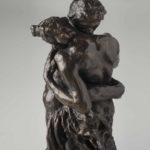The essence of creativity in India is originality which gives birth to fascinating art forms. Whether it is dance, music, painting or designing, Indian art is recognised as one of the most unique and intriguing ones in the history of mankind. Not only does Indian art comprise of a dense Indian culture, but also has a mystic element to it. Historical monuments in India like the Taj Mahal is by itself an expression of love with extravagant paintings on the wonder.
The beauty of Indian canvas art paintings is the expression of a medley of emotions displayed with a collaboration of various colours in one unit. In 5500 BC the ancient and earliest found Indian paintings were discovered in the Rock Shelters of Bhimbetka. Exploring the diversity of Indian art may take a lifetime, but at the end, it definitely won’t seem enough. Being socially different and unmistakable, an assortment of fine arts have advanced throughout the years; some untouched by modernisation, some adjusting to new paint hues and materials. Each portrays religious stories or Gods and Goddesses for the most part, yet they’re all one of a kind, excellent and matchless in their own way.
Few of the alluring art styles mentioned below invigorate you with a fresh perspective of Indian culture and tradition-
1- Tanjore paintings
Thanjavur painting or commonly known as Tanjore painting, is the most beautiful and old established painting of Southern India. It is one of the ancient art styles established way back in 1600 AD. Comprised of rich colours and embedded with precious stones and lustrous 22 carat gold metallic foils, the Tanjore paintings particularly depict the ‘Divine One’ in a beautiful way in Hindu temples. A three-dimensional effect was brought onto these paintings by artists by using limestone. Scenes from Hindu Puranas, Sthala-puranas, and different religious writings were imagined, outlined or followed and painted with the fundamental figure or figures set in the focal segment of the painting. Being mounted on lavish frames and embossed elements, the Tanjore art is a feast for the eyes of the observer.

The vibrance
2- Madhubani Paintings
Originating from the Indian mythology, Janak who was Sita’s father in the religious scriptures of Ramayana, the Madhubani painting is one of the most popular traditional folk art forms in India. After an earthquake in the year 1930, this intriguing art was discovered by the British. Encompassed with a geometric pattern, the Madhubani paintings became a world-famous Indian art form. Also known as Mithilia art, Madhubani has the essence of the holy Hindu mythological text, the Ramayana.

Pure intrigue
3- Phad paintings
This traditional painting, about 700 years old originates in Rajasthan, is a religious blend of Indian folk art and culture. It was founded by the Joshi families in the Bhiwara district of Rajasthan. Using a long piece of scroll made up of cloth or canvas, the Phad is comprised of a subtle hint of bright colours. These artworks portray the different fables on a look of canvas, scene by scene, with most extreme clearness. The subtleties of every scene are clarified by proficient storytellers, known as the Bhopas.

The folk blend
4- Miniature paintings
Comprising of intricate detailing and a colourful hue, the Miniature painting originated in the Mughal era around the 16th century. These paintings were inspired by the Persia art forms, the Miniature painting gained popularity during the rule of Shah Jahan and Akbar. The epics of the Mughal era are beautifully depicted in these paintings.The pictures went with writings in religious original copies and delineations of legendary sagas. In the Rajasthan and the Pahari of the Punjab slopes, the works of art kept on enlivening poetry, age-old legends, religious folklore, the temperaments of affection and evolving seasons. The accentuation was on the production of a state of mind and the correspondence of bhava (feeling) through a rich and expressive style.

Miniatures
5- Gond paintings
A creatively elaborated painting of the flora and fauna is what best describes the Gond paintings. The basic essence of these paintings depicts the interconnectedness of nature. With patterns of dots and lines, each art piece has a geometrical touch to it. Gond is a bold, colourful and radiant art style originating from the Gondi tribe of Mandhya Pradesh. Rich in detail and shades, these tribal works of art splendidly utilize present day intends to inspire the pre-current mind. Jangarh Singh Shyam was the primary Gond craftsman to utilize paper and canvas for his specialty. His ability was soon perceived, and his work was displayed everywhere throughout the nation.

Exuding radiance
6- Kalighat paintings
This art form originates from Kolkata between the 19th and 20th century, the artistic state of India which not only comprises of a variety of paintings but also consisting of exuberant music and dance in its culture. The Kalighat paintings were originally made on handmade or machine made paper by a group of artists called the ‘Patuas’ in the beautiful Kali temple of Kalighat region. These works of art, on cloth material and pattas, at first portrayed Gods and Goddesses, yet then took a turn towards social change. With shabby paper and paint hues, squirrel hair brushes and shaded colors, the workmanship was portrayed by immaculate strokes, brushwork, and basic yet intense illustrations.

Paper, strokes and Goddesses
7- Pattachitra paintings
Birthed way back in the 12th century, the Pattachitra paintings have their origins in Orissa. In Sanskrit, ‘Patta’ means cloth and ‘Chitra’ means picture. With spiritual roots, these paintings portray the Hindu deity Lord Jagannath believed to be the incarnation of Lord Krishna. The uniqueness of these paintings is that the Chitrakaar (customary pattachitra craftsmen) starts the painting with white and also ends it in white. Different subjects incorporate the tales of Radha-Krishna, scenes from Ramayana and Mahabharata (the two well-known Indian stories), sanctuary exercises, and others. An imperative component of artists is their utilization of vegetable and mineral hues in this art form.

Hues of purity



What do you think?